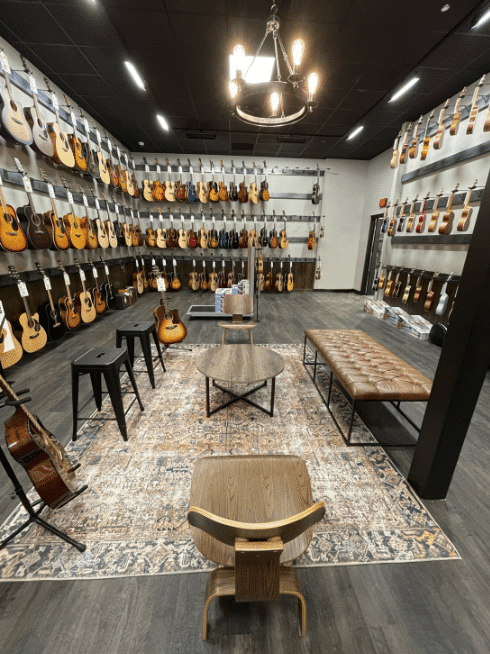Wall wash lighting is a versatile and essential aspect of interior design. It involves carefully placing lighting fixtures to create a uniform, soft illumination that grazes the surface of walls, adding an even base layer of light, usually to a vertical space. Proper lighting is of paramount importance in lighting design, as it can significantly impact the mood, functionality, and aesthetics of a room.
In this blog, we’ll explore the concept of wallwash lighting, its various techniques, and the significance of proper lighting in commercial spaces.
Understanding Wall Wash Lighting
Wall washing is a technique designed to eliminate harsh shadows, reduce glare, and create a welcoming and visually pleasing environment. This technique operates on core principles, combining directional lighting and uniform illumination.
Directional lighting fixtures, such as the Solais LWW, can be attached to ceilings via track to ensure that light is cast consistently and evenly across a wall. To achieve this, the placement of fixtures is key. Be sure to consider the height at which the fixture will be placed, spacing from other fixtures, spacing from the wall being washed, and aiming angle.
Without uniform illumination, directional lighting could create an uneven look and feel, creating hot spots in a space. A downlight, like the ST2A WW by Solais, can create a smooth gradient of light across a general area, eliminating harsh transitions from directional lighting.
Wall Wash Lighting in Commercial Spaces

Retail Spaces: In retail environments, this type of lighting is crucial for highlighting walls of merchandise and graphics, creating a visually appealing ambiance, and guiding customers through the store.
Art Galleries and Museums: Wallwash lighting is often used as a base layer for artwork, providing uniform illumination in conjunction with tighter beams to accent specific pieces, allowing visitors to appreciate every detail.
Restaurants: In dining establishments, such lighting can be used to illuminate menu boards, accent artwork, or to bring attention to logos and branding.
Hospitality: Hotels and other hospitality spaces can use wallwash lighting to create an even floor-to-ceiling showcase of a wall of wine bottles or a piece of art. It can also bring focus to textures of wall coverings for a luxurious feel.
Design Considerations
Color Temperature: The color temperature (warm, cool, or neutral) can significantly influence the ambiance. It’s crucial to align the color temperature with the purpose of your space.
Distribution: The distribution of fixtures determines the spread of light. Wider angles are suitable for general illumination, while narrower ones can emphasize specific details. Wall wash fixtures have asymmetrical distributions to provide a wide and even spread of light from top to bottom.
Fixture Placement: Correct placement is essential to achieve uniform illumination. Fixtures should be strategically positioned, considering the room’s layout and purpose. Wallwash fixtures generally should be placed 3 feet off the wall for optimal light distribution.
Dimming and Control Options: Dimmable wall wash lighting provides flexibility to adjust the lighting levels to suit different activities or moods. Advanced control options, like automation and smart systems, add further convenience.
Energy Efficiency: Utilizing energy-efficient LED wallwashers reduces electricity consumption and lowers operating costs. Solais products are known for their energy-efficient designs.
Trends in Wall Wash Lighting
Smart Lighting Integration: The integration of smart lighting solutions allows for remote control, automation, and the adjustment of lighting to match various needs and scenarios.
Sustainable and Eco-friendly Options: In response to the growing demand for sustainability, many wall wash lighting fixtures are now designed with eco-friendly materials and energy-saving technologies.
Increased Visual Comfort: Solais’ wallwashers are designed with a concealing reflector for indirect illumination, providing uniform appearance and light output without glare.
Conclusion
Wallwash lighting is a powerful tool for transforming commercial spaces, enhancing their functionality and visual appeal. By understanding the core principles, considering design factors, and exploring the latest trends, you can create compelling lighting solutions. Whether you are illuminating a retail space, a museum, a restaurant, an office, or a hospitality venue, wall wash lighting can be the key to creating a uniform space. Solais provides a range of fixtures that cater to various applications, contact us today!
